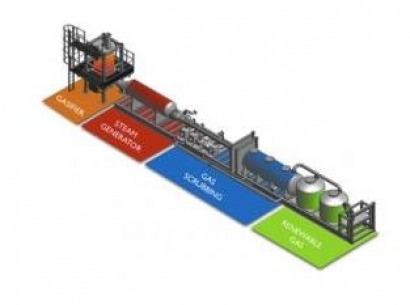Three
years after announcing its breakthrough in converting MSW to ethanol, Fulcrum
BioEnergy appears to have secured all the funding necessary for its first MSW
to low-carbon fuels plant in Storey County, located 20 miles east of Reno, Nev.
The
Pleasanton, Calif.-based company landed a $105 million loan guarantee by the
U.S. Department of Agriculture in August. Fulcrum originally filed a
registration for an initial public offering with the Securities and Exchange
Commission in September 2011 but rescinded its filing later.
 |
| Courtesy: Fulcrum BioEnergy |
“The
current IPO market environment remains challenging, especially for development
stage companies like Fulcrum,” President and CEO James Macias said. “Because of
this we have secured commitments from alternative capital resources to advance
our MSW to renewable fuel program and we have withdrawn our registration
statement.”
Fulcrum
also closed an equity investment agreement with Waste Management in November
2011 that could provide up to $70 million for the Sierra BioFuels plant. The
proposed plant is expected to produce close to 10 million gallons of ethanol
each year. The company secured its feedstock and entered an offtake agreement
for the plant in 2009. In addition to ethanol, the Sierra BioFuels plant will
produce its own renewable energy to run the plant.
Fulcrum
uses a two-step process to convert post-recycled MSW into ethanol. An InEnTec
downdraft partial-oxidation gasifier is used to convert the sorted MSW to a
syngas. The syngas then runs through a catalyst in Fulcrum’s proprietary
alcohol synthesis process which it developed with Nipawin and the Saskatchewan
Research Council before the ethanol is finally separated and purified.
The
basis of Fulcrum’s business strategy is to secure zero-cost feedstock
agreements around the country, thus giving it a competitive advantage over
those who use corn or other forms of biomass. While Fulcrum has only just
started construction on its Sierra BioFuels plant in Nevada, the company
currently has feedstock agreements in 23 other cities across the U.S.
Better BTU: Fulcrum’s turning point was
landing the $105 million loan from the USDA. The government has laid out
significant dollars in an attempt to jumpstart development of biofuel
technologies that utilize non-food feedstocks. While we’d still like to see the industry focus on clearing
one hurdle – clean, economic and efficient gasification – before approaching
the next, we like Fulcrum’s business approach. Still a lot has to happen if the
plant is to be in production by the end of 2013, as the company states. We’ll
be keeping our eyes peeled for news out of Nevada.
Recommended Reading:
Fulcrum Secures $175M for
Waste-to-Fuel Gasification Project – Waste
Management World (Dec. 3, 2012)
$105 Million USDA Loan
Guarantee for Waste-to-Biofuel Facility – Waste
Management World (Aug. 7, 2012)
















